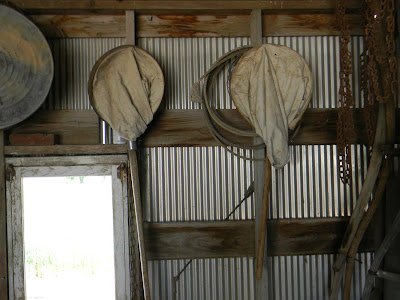First off, you need to know what a pest is in this whole analysis. A pest is anything that harms a crop. Weeds, (like those thistles up there) certain insects, that Striped Rust I was posting about, are all examples of pests. A harmed crop produces less, which raises your costs and the farmer's income.
People who deal with theory a lot have a great love of stages. They have given IPM three: prevention, observation, and intervention. (Not necessarily in that order.)
Here in Owyhee County the most obvious form of prevention is crop rotation. Crop rotation's primary motivation is soil health but it helps a bit with any pests that my be in the ground. Anything that preys on crop A will have nothing to eat in the next year when crop B is grown.
Pictured Above: Crop Rotation
Observation; it's the reason farmers drive slowly sometimes, much to the despair of impatient motorists. A farmer must know his or her fields. Simple as that. It takes a great deal of knowledge and experience to know what is being observed, and a farmer will spend a lifetime learning as much as he or she can.
There is much to be observed out in the fields. Fortunately we have special tools and people for that. The seed companies employ the "Field Men" (or Field Women, as the case may warrant) who are payed to observe. They have all kinds of tools to analyze and such. The most important observation tool (at least on the little critter front) for a farmer is a simple bug net. Swept through a crop, it can tell you just about every kind of insect, arachnid, etc that has a significant impact there. (The rope is for slightly larger pests...)
The most labor intensive step is Intervention. This is the solution step. It's more or less strait forward. Many of the solutions are made possible or easier by the use of chemistry and technology. Not all that long ago, our Striped Rust problem would have been much bigger. Imagine the wonder of our ancestors at us using a flying machine to spread a liquid that combats fungus.
The Intervention stage is full of special tools, but that's more of an Application deal than a Theory one, and that's what tomorrow will be about. I'm sure you're just as tired of reading for today as I am of writing. Come back tomorrow to see how this IPM stuff is actually done.






No comments:
Post a Comment